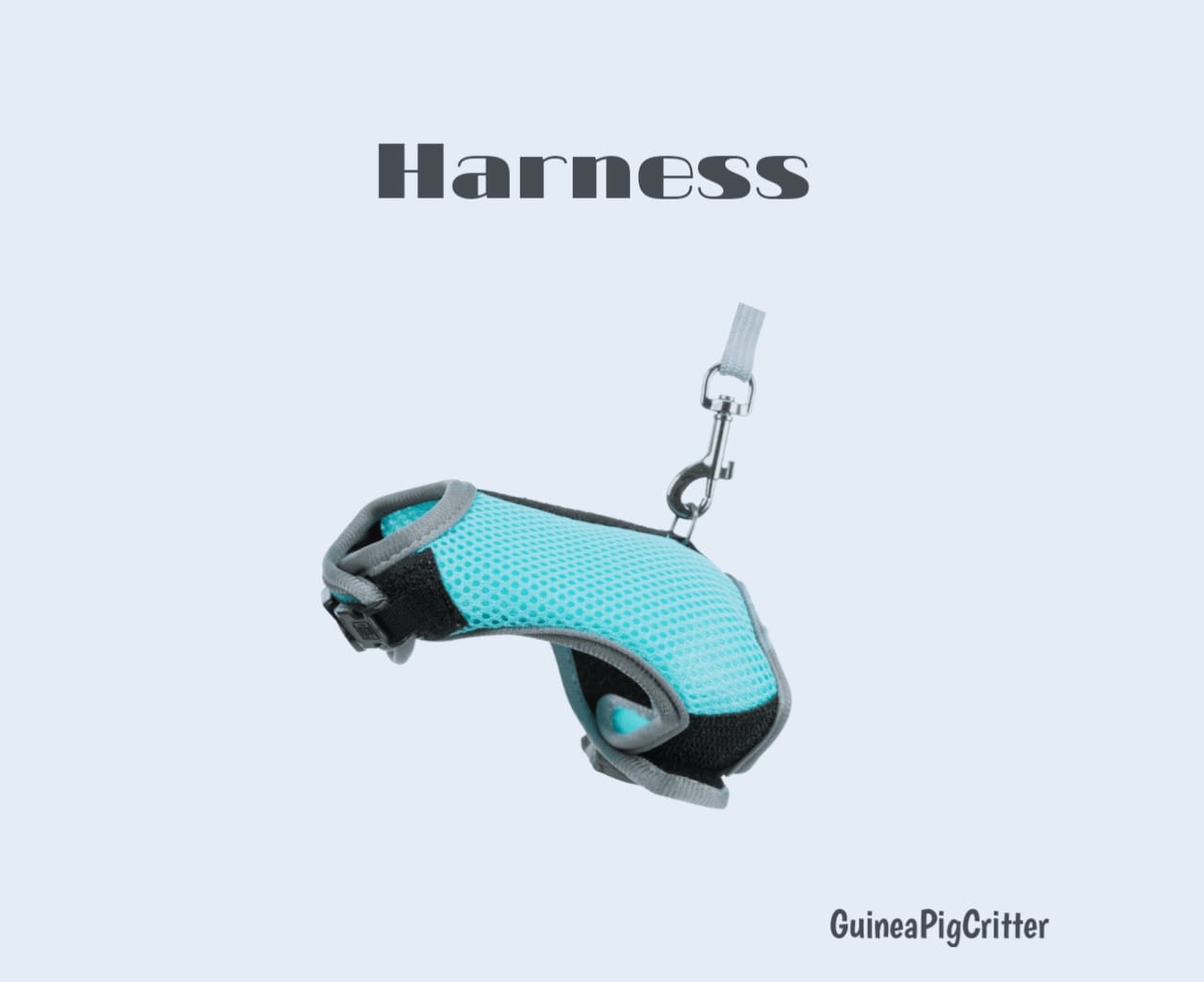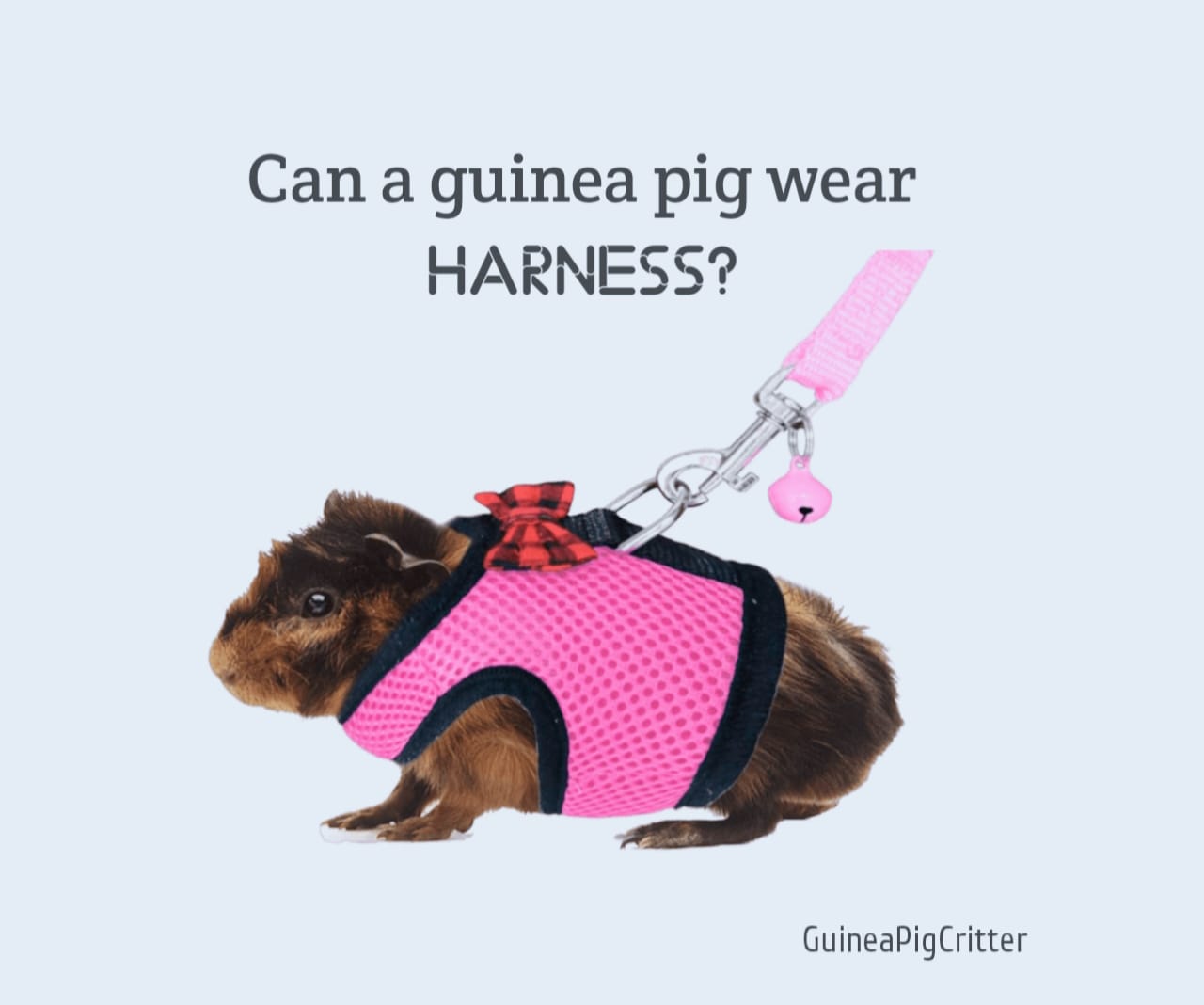Guinea pigs are adorable, small friends that fill many owners with joy. If you yourself are a parent to a guinea pig, you might be wondering if you can take your furry friend for a walk on a harness like a dog or even a bunny. The idea of a guinea pig on a leash is a playful one, but is it safe?
Most pet stores carry harnesses made especially for guinea pigs, and some owners consider them a wonderful idea. Availability does not always mean safety, however.
In this article, we will explore whether or not a guinea pig can or should be placed in a harness, the risks, and other methods of exercising and giving your pet time outdoors.
See this post: Can guinea pigs wear sweaters?
Learning guinea pig anatomy
Before we can pass judgment on whether or not a harness is appropriate for a guinea pig, we need to know their physiology. Guinea pigs possess a very fragile skeletal system. Unlike rabbits or even dogs, their ribcages and spines are very fragile. This implies that improper pressure in the improper direction will do severe damage.
Moreover, guinea pigs do not have the necessary muscle control and flexibility to adapt to a harness. They are not suited to be walked, and they do not have the natural urge to go along with a leash like a dog. Rather, they will become rigid with fear or panic, which may be dangerous.
Guinea Pig Skeletal System
Guinea pigs have an unusual skeletal system which is quite light in relation to body weight. Their backbone is especially susceptible to damage, and unlike the more flexible creature the cat, guinea pigs possess a rigid back system. This makes them susceptible to back injuries if they are given a sudden jolt or pressure.
Also. Their ribcage isn’t as strong as that of larger mammals. A harness that tightens across their chest can result in bruising, labored breathing, or even broken bones. Since guinea pigs use their lungs for effective oxygen exchange, any pressure on their ribcage can result in grave respiratory distress.
The Dangers of Wearing a Harness for a Guinea Pig Even if the idea of walking your guinea pig appears to be a dream come true, there are some risks that come with putting a harness on them. This is why a harness may not be the most suitable option for your pet.
Stress and Anxiety
Guinea pigs are prey animals. They are genetically predisposed to be wary of the surroundings and can easily get stressed. Wearing a harness will make them feel confined and lead to extreme stress. If a guinea pig panics when wearing a harness, it will struggle or try to break free, and potential injuries can occur.
In the wild, guinea pigs rely on speed to scurry into hiding areas when threatened. A harness impairs this motion, leaving them vulnerable and stressed. Long-term exposure to stressful situations can cause negative impacts on their health, leading to diseases like impaired immune function and gastrointestinal problems.
Risk of Injury
A harness puts pressure on a guinea pig’s delicate body, particularly on its back and ribcage. Its body is not adapted to withstand such pressure, as is the case with a dog or a cat. If they pull back or if the leash is pulled in too, it can cause broken bones, internal injury, or suffocation.
Also, some harnesses have straps that may cut through the guinea pig’s sensitive skin and lead to abrasions or pressure sores. They have highly sensitive skin, and prolonged use of constricting material can lead to irritation and discomfort.
Escape Risk
Even when you succeed in offering a good-fitting harness, guinea pigs can usually wriggle out of them. If you’re away when your guinea pig was able to escape, you can lose them as they wander into trouble like getting lost or attacked or maybe consuming something they shouldn’t be consuming.
Guinea pigs are extremely quick when in danger. When unattached from a harness, they will run into places that they are hard to find, such as bushes or under fences. They lack homing behavior like dogs and perhaps cannot return to their starting points.
Natural movement and behavior
Guinea pigs also travel in short bursts of movement as opposed to a steady, paced walk like a dog. They are not inclined to travel in a straight line or on a lead. Put onto a lead, they will stand stock still or run around randomly, which is stressful or damaging to both you and your pet.
In addition, guinea pigs also communicate non-verbally through their body language, and limiting their mobility can stop them from acting naturally. They employ their freedom to run as a survival mechanism, and a harness deprives them of this independence.
Exposure to outdoor hazards
Even if your guinea pig fails to escape, taking them out for a walk in open air on a leash can expose them to other hazards in the shape of inclement weather, toxic plants, parasites (fleas and ticks), or other animals. A frightened guinea pig can easily get shocked due to a sudden motion or a loud noise.
For instance, birds of prey, like hawks, are able to spot a tiny guinea pig as a target. Even if you are walking with the leash, a surprise attack can lead to your pet being harmed. Furthermore, certain lawns and public parks might have been sprayed with pesticides or fertilizers that are toxic to guinea pigs if ingested.

Are there safe alternatives
While a harness is not a safe option for guinea pigs, there are a few other alternatives that are available for allowing your pet to exercise and get some fresh air in a much safer manner.
Use a safe outdoor playpen
If you want your guinea pig to have some outdoor experience, the best solution is a large, covered playpen. Choose one with solid sides or a tight mesh to prevent escape and entry by predators. Always place the playpen in the shade and keep your guinea pig under close supervision at all times. Make sure there are some hiding places so your pet will feel safe.
Consider adding tunnels, toys, and shelters to stimulate the space. Make sure the floor is not pesticide-treated and check for holes in which your guinea pig can dig under and get out.
Indoor Free-Roaming If you do not have a safe outdoor area, set up an indoor play space that is guinea pig-proofed. Fencing off a room or area, you can allow your guinea pig to roam freely in it without getting hurt. Adding tunnels, chew toys, and hiding spots will provide stimulation in the area.
To start them off, put treats in various locations to give them a fun foraging experience. This encourages their innate curiosity and gives them physical and mental stimulation.
Promote natural exercise
Guinea pigs are active by nature when provided proper surroundings. Offering a large cage with tunnels, ramps, and hideaways will stimulate natural locomotion. Floor time outside the cage, where they can roam about in a controlled and safe setting, is also helpful.
Take them out safely
If you really want to take your guinea pig outside without risking their safety, consider placing them in a secure pet carrier. This allows them to get fresh air without the hazards of a harness and leash.
See this post also: Can guinea pigs wear Petco?
Conclusion
Although the notion of a guinea pig wearing a harness can be cute, it is not an option that is safe and feasible. Their delicate body, inherent behaviors, and specific gait features render wearing a harness unsafe and not advisable. Resort to other options such as secure outdoor playpens, indoor free-roaming, and interactive cages to keep your guinea pig stress-free, happy, and healthy.
As guinea pig owners, our first concern must always be their well-being. Knowing what they require and being mindful of their natural behaviors will be the best means of ensuring they are safe and contented. Have you ever had a go at any enjoyable, safe exercise activities with your guinea pig? Describe them in the comments below!


